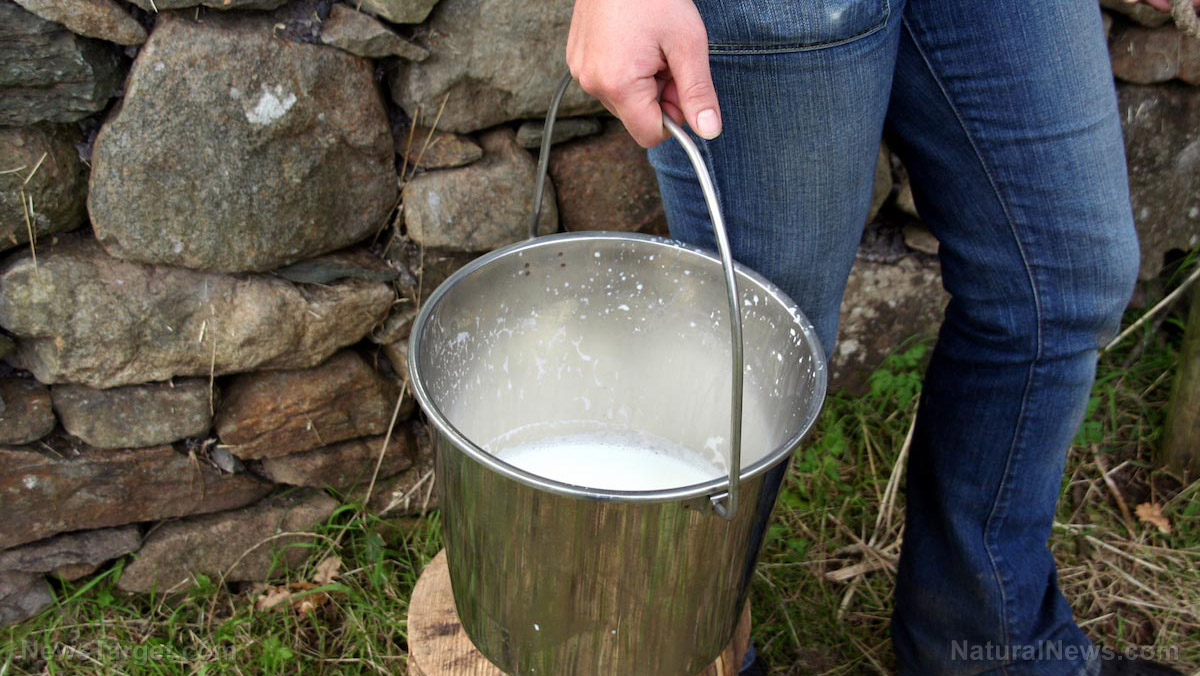
Keep in mind that before you try any of the ways listed below, it is better to pasteurize the milk. This will prevent bacteria from spoiling the milk. Once the milk is filtered and pasteurized, you can begin working with "clean" milk that will last longer.
Before you try canning milk, ensure that all jars and seals are sterile. Warm the latter so you can seal your jars properly.
- Before you start, you will need "extremely clean milk." Clean the cow's udder, the buckets, the jars, and the equipment. If you can't pasteurize the milk, strain it carefully with a milk sieve or several layers of clean, lint-free cloth (e.g. cheesecloth).
- Pour the milk into a clean and covered bowl while you’re preparing the jars.
- Wash the jars in warm and soapy water. Rinse the jars and keep submerged in hot water until you’re going to use them.
- Don't fill each jar to the brim. Leave at least half an inch at the top for headroom. Carefully clean the rims of the jars, then put the sterilized hot rims and rings on them.
- Put the jars in a pressure canner and fill with the recommended amount of water. Put the canner over the hottest part of the stove on medium.
- Leave the pressure on 10. Cook quarts for about 25 minutes and pints for 20 minutes. The pressure must stay at 10 or you’ll have to repeat everything.
Since milk is a low-acid food, it is susceptible to botulism. Pressure canning ensures that the milk is in a "safe temperature" which kills any bacteria.
Canned milk can last for at least two years, and you can cook with it. You can still drink canned milk even if there is discoloration. Discolored canned milk might turn a "slight caramel color," and it can taste sweeter or "cooked."
While canned milk is suitable for recipes that require milk, it can't be used to "make cheese, yogurt, or rennet desserts" since it won’t clabber or curdle. Canning is a satisfying method of providing food for your family when SHTF because you know exactly how the food was prepared. Who says you have to live on stale food full of preservatives when disaster strikes?
Condensing milk is one way of freeing up shelf space, especially if you have a lot of cow or goat milk on hand. This method creates evaporated milk, or whole milk that has had at least 60 percent of its water content removed.
- Get 4 ½ cups of milk. The recipe can be adjusted based on your preference.
- Pour the milk into a heavy-bottomed pan, then put a wooden spoon into the milk. Hold it straight up and take note of the milk level. Pour the rest of the milk into the pan.
- Let the milk simmer and stir it every couple of minutes so it doesn’t burn. Once the milk reduces, remove the skin that forms.
- Measure your progress using the wooden spoon. You'll know the milk has reduced 60 percent when it reaches the mark you made earlier.
- Let the milk cool then follow the same procedure for canning milk.
You can reconstitute evaporated milk by adding equal amounts of water to it. The milk can be used as-is if you're making pudding. Evaporated milk can also give coffee, tea, or cocoa a nice flavor boost. It can last as long as regular canned milk, and it only takes up half the space.
Unlike dehydrated food, dehydrating milk is trickier, especially if you want to preserve its flavor and nutritional value. This method requires expensive equipment like an atomizer. Dehydrating will also require a lot of milk for only a pint of dehydrated milk. It's easier to buy powdered milk instead.
One of the earliest methods of preservation, salting can preserve food and even milk products. This method suits butter, cottage cheese, and other dairy products. Salting also adds a required mineral and "flavor enhancer" to any dairy product.
When SHTF, freezing is another method to consider. However, frozen milk will have a "grainy texture." Simply shake the milk if it separates. But if SHTF, your frozen milk could go bad.
You can learn more articles about useful survival techniques and other food preservation methods at Homesteading.news.
Sources include:
Please contact us for more information.

















